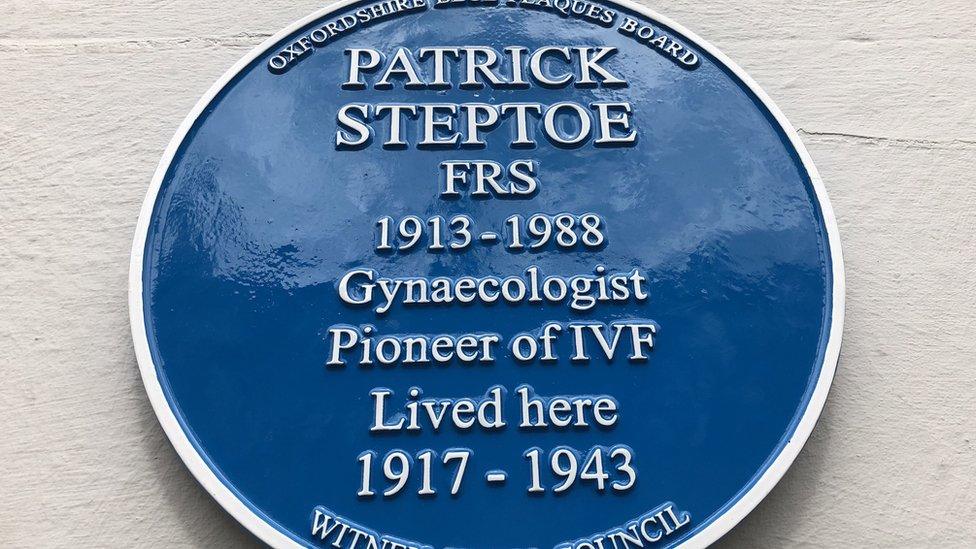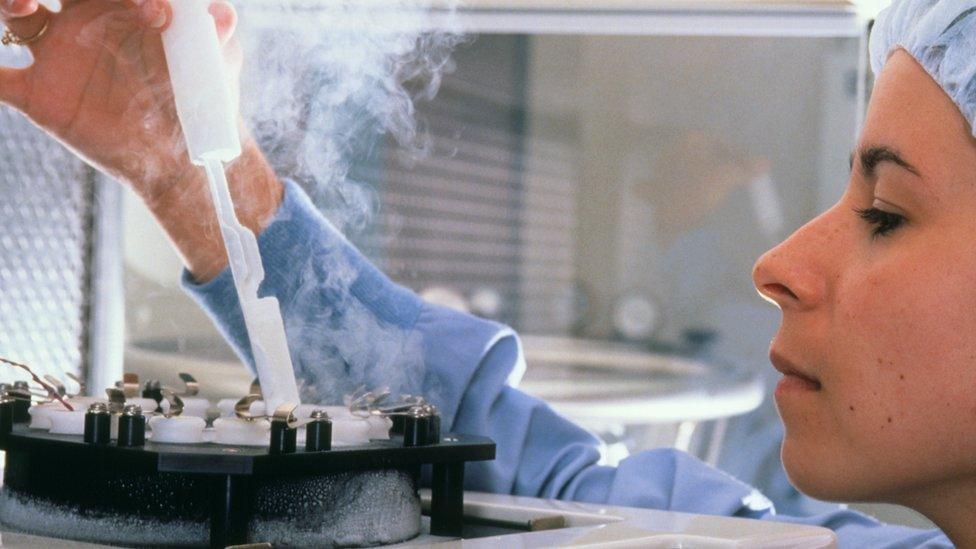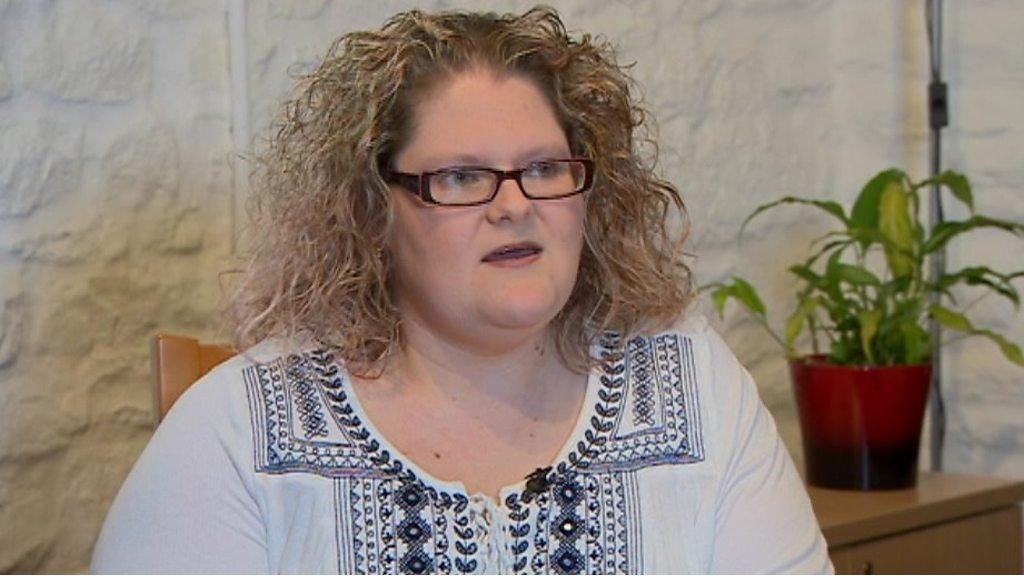IVF pioneer Patrick Steptoe gets blue plaque
- Published

Patrick Steptoe's research led to more than six million IVF babies being born around the world
One of the scientists whose pioneering work led to the first test-tube baby being born is being honoured with a blue plaque outside his childhood home.
Patrick Steptoe, who grew up in Witney in Oxfordshire, developed in vitro fertilisation (IVF) treatment with Robert Edwards and Jean Purdy.
The birth of Louise Brown on 25 July 1978 in Oldham, Greater Manchester, marked the beginning of their success.
Since then more than six million IVF babies have been born around the world.
The scientists developed IVF at a lab in Royton, Oldham, and later set up Bourn Hall Fertility Clinic in Cambridgeshire.
Ms Brown said Steptoe, a gynaecologist who died in 1988, was "like a grandfather" to her.

Gynaecologist Patrick Steptoe (left), embryologist Jean Purdy and physiologist Robert Edwards at the birth of Louise Brown
She said: "My mother, Lesley Brown, always said that she trusted him from the first moment that she met him.
"Patrick Steptoe died when I was 10 years old so I did not know him well.
"We last met when we were guests on a TV programme together and he was proud of the children he had helped bring into the world.
"His legacy will live on as there are now millions of people in the world who owe their existence to the work of the IVF pioneers."
In 2015, a blue plaque to all three pioneers was unveiled at their former lab site in Oldham.
Louise Brown's 40th birthday last year was marked by a museum exhibition in London
- Published22 April 2019

- Published25 July 2018

- Published17 January 2017

- Published14 March 2015
